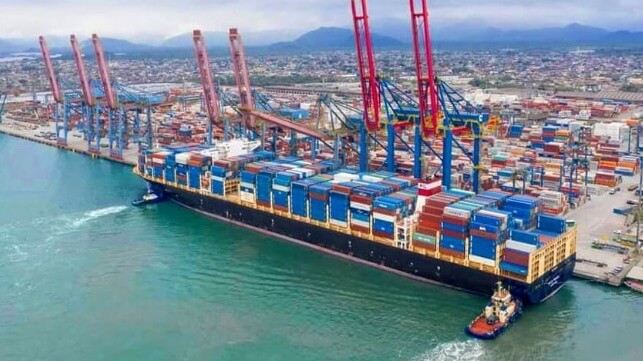Intra-Asian Container Lines Launches Green Corridor Cluster

Asian shipping lines and logistics providers are joining with Lloyd’s Register Maritime Decarbonization Hub to launch a new alliance focusing on the decarbonization efforts starting with intra-Asia container trade. Unlike other green corridor initiatives, which are being driven by ports and routes, Lloyd’s is calling “The Silk Alliance” unique in that it will be a regional cluster led by the companies focusing on the decarbonization of the sector.
Initiated by the Lloyd’s Register Maritime Decarbonization Hub, The Silk Alliance brings together a diverse group of organizations. Shipowners, including MSC Shipmanagement, Pacific International Lines, Wan Hai Lines, X-Press Feeders, and Yang Ming Marine Transport Corp., are committing to their participation. Other sectors participating include shipyard Keppel Offshore & Marine, bunker logistical supplier, Singfar International, engine manufacturer, Wärtsilä, ship manager, Wilhelmsen Ship Management, and financial institutions, the Asian Development Bank and ING.
“This is a first-of-its-kind in developing fleet transition strategies for multiple stakeholders, not just with the support of major players within the maritime industry, but also with operators in other industries that serve the maritime supply network – the shipowners, shipyard managers, financial institutions, bunker suppliers and engine manufacturers,” said Charles Haskell, Lloyd’s Register’s Decarbonization Programme Manager. “The Silk Alliance aims to establish a fleet-specific decarbonization strategy and green corridor implementation plan that encompasses key links in the maritime supply network which are critical to providing maritime players of all sizes with the resources to transition to carbon neutral fuels and vessels.”
Collaborating to advance the decarbonization of the maritime industry, Silk Alliance members are committing to start by sending an aggregated demand signal for other stakeholders such as fuel providers, port operators, and governments to support the Green Corridor Cluster. The stakeholders will work together to develop a fleet fuel transition strategy that can enable the establishment of a highly scalable green corridor cluster.
Speaking as one of the founding members of the new initiative, Goh Chung Hun, General Manager, Fleet, at PIL said, “We hope that through our participation in The Silk Alliance, we can demonstrate our commitment to decarbonizing our fleet, and at the same time working with other stakeholders to establish regional green corridors for feeder shipping utilizing low carbon fuel or technology.”
The members will draw from their areas of expertise to develop a fleet-specific fuel transition strategy for containerships operating primarily in Asia, based on the Lloyd’s Register Maritime Decarbonization Hub’s First Mover Framework. Through this effort, they hope to foster collaboration in the maritime industry to demonstrate tangible actions that can lower the investment risk that is currently preventing the wider uptake of sustainable carbon-neutral fuels.
Carl Schou, CEO and President of Wilhelmsen Ship Management, predicted that “The Silk Alliance presents an opportunity for the industry to leapfrog the progress of fuel transition.”
Several other plans for green corridors have been launched including between Shanghai and Los Angeles, in the Baltic and Northern Europe, and from Singapore. The Australian mining industry joined in the exploration of a corridor to support the ore business to Asia and recently the cruise industry joined with ports in the Pacific Northwest, Canada, and Alaska launching an effort for a green corridor linked to cruise ships that sail to Alaska each summer. The idea is by working together on these routes with industry and government that they can accelerate decarbonization efforts and provide a model for other regions around the world to meet the goals to lower carbon emissions from the maritime industry.
